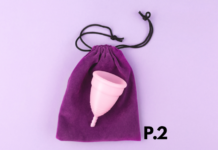Beyond its physical benefits, yoga holds the power to instill serenity and tranquility in both mind and body, offering solace not only to stressors like anxiety, depression, and pain but also aiding recovery from afflictions like migraines.
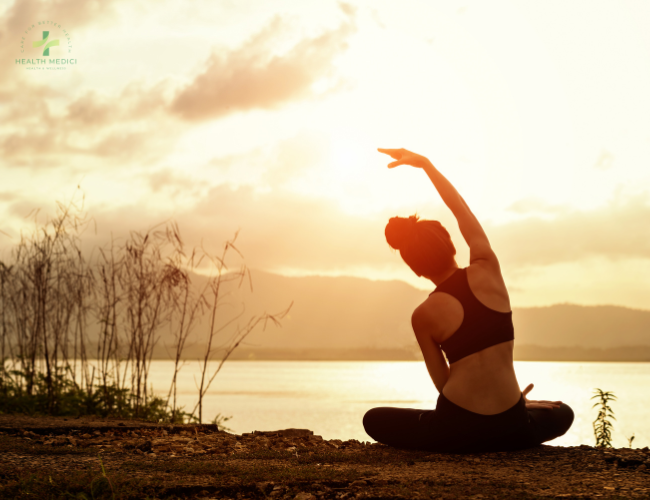
The precise mechanisms through which yoga orchestrates these transformations remain elusive, though the parasympathetic nervous system (PNS) could be instrumental. Yoga appears to engage the PNS, eliciting a deceleration of heart rate and a reduction in blood pressure.
Migraines, surpassing the intensity of ordinary headaches, manifest as throbbing discomfort typically concentrated on one side of the head. Accompanied by symptoms like nausea, dizziness, light sensitivity, and sound aversion, they endure for hours to several days.
Yoga’s potential is twofold: an immediate holistic response to ongoing migraines and a proactive strategy to mitigate their occurrence.
Research Insights
A 2014 study revealed that integrating yoga into conventional treatment regimens led to diminished headache frequency and severity. This change correlated with an augmentation of vagal tone, reflecting PNS activity.
In sum, yoga fine-tuned cardiac autonomic equilibrium. Given that imbalances in the autonomic nervous system and circulatory regulation relate to migraines, restoring equilibrium could potentially curtail migraine susceptibility.
Beneficial Yoga Poses
Certain yoga postures address the tension and stress contributing to migraines. Specific poses bolster circulation, augmenting blood flow to the brain and potentially alleviating pain and pulsating sensations.
Outlined below are four poses that might alleviate symptoms and restore equilibrium among the physical, mental, and emotional dimensions:
1. Child’s Pose
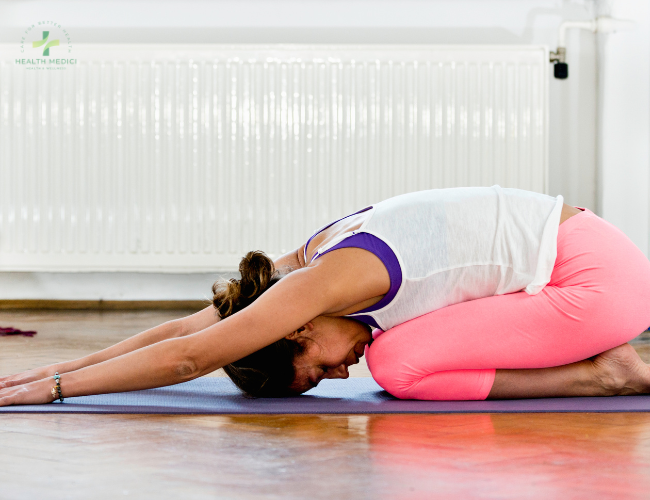
This pose is known to soothe the nervous system and abate pain.
- Kneel on the ground with toes touching and knees spread wide.
- Sink buttocks onto heels.
- Sit upright, allowing your body to acclimate.
- Upon exhaling, lean forward, resting head and chest amid or atop thighs. Forehead contacts the floor.
- Arms extend, palms downwards.
- Hold for a minute or more, facilitating the release of neck and shoulder tension.
- Employ hands to rise, resettling onto heels.
2. Bridge Pose
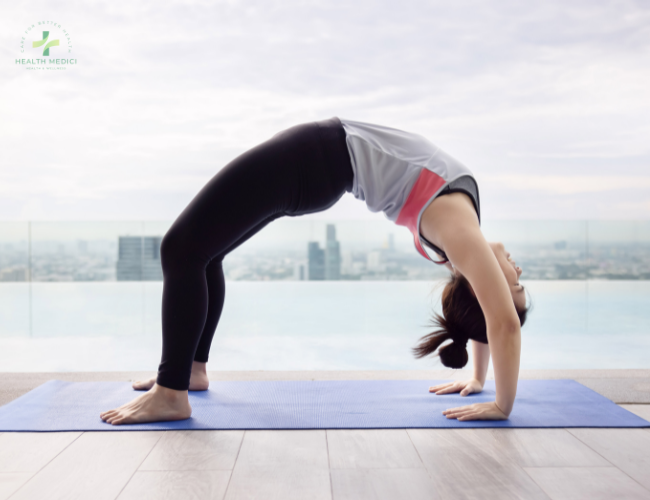
This pose facilitates chest, heart, and shoulder openness, reducing anxiety.
- Lying supine, knees bent, feet on the floor.
- Arms extend, palms on the floor.
- Elevate pelvis; torso follows, while shoulders and head remain grounded.
- Ensure parallel thighs and feet; weight evenly distributed.
- Sustain for up to a minute.
- Release by gently lowering torso and pelvis, knees descending until supine. Gradually ascend to upright.
3. Downward Facing Dog
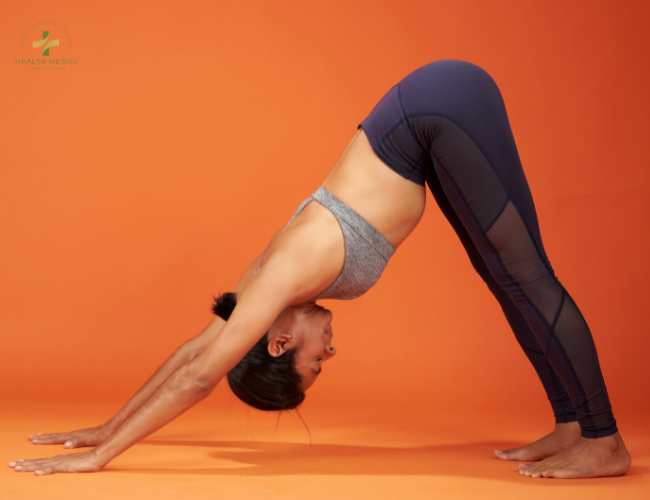
The pose helps enhancing brain circulation.
- Commence on hands and knees, wrists under shoulders, knees beneath hips.
- Elongate elbows, relax upper back.
- Extend fingers, press down, weight evenly divided.
- Gradually lift knees, straighten legs (knees not locked).
- Elevate pelvis, elongate spine.
- Maintain for up to two minutes.
- Exit by bending knees, reverting to hands and knees.
4. Corpse Pose
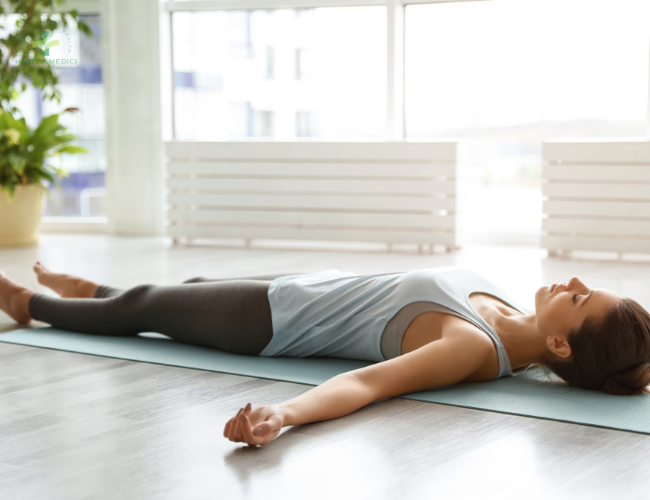
This pose can restore your body to a deep state of rest.
- Supine position, back on ground.
- Legs slightly apart, arms at sides, palms up.
- Sustain for 5 to 30 minutes.
- Some find relaxation music beneficial, but choose noise levels mindful of migraine sensitivity.
- Exiting involves gradually rekindling body awareness, wiggling fingers and toes, rolling to the side, and transitioning to an upright stance.
Although feasible during a migraine, incorporating yoga into your daily regimen might yield better results.
Looking Ahead
For optimal outcomes, consider integrating yoga into your established treatment plan.
Appreciate that migraines lack universal remedies. While some might find solace in yoga, others might not. If contemplating yoga’s suitability, consult a medical professional.
By ChatGPT










